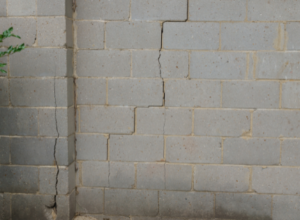
Are you a San Antonio resident, or are you just curious about the foundation problems that are common in the region? Great! RegionalFoundationRepair is at your service 24/7. In this guide, we cover common questions like:
- What Foundation Problems Are Common In San Antonio?
- What Are the Causes of Foundation Problems in San Antonio?
- How Can You Prevent Foundation Problems in San Antonio?
- Can Foundation Problems Be Fixed in San Antonio?
- When Should You Call a Foundation Repair Expert?
Table of Contents
- What Foundation Problems Are Common In San Antonio?
- What Are the Causes of Foundation Problems in San Antonio?
- How Can You Prevent Foundation Problems in San Antonio?
- Can Foundation Problems Be Fixed in San Antonio?
- When Should You Call a Foundation Repair Expert?
What Foundation Problems Are Common In San Antonio?
Texas, specifically San Antonio, ranks high in the dreadful list of areas most prone to foundation issues. These are a result of various geographical and climatic factors that end up causing homeowners several problems. Understanding these problems is the first step towards resolving and even preventing them from occurring.
Below are the most common foundation issues that you can expect to encounter in San Antonio. If you find that your home is experiencing these issues, reach out to our foundation repair experts in San Antonio to assess the issues and determine the best course of action for your home!
Cracks on Walls, Floors, and Other Structures
While not all cracks indicate major issues, certain kinds of cracks could be pointing to serious underlying issues within your foundation. It is considered normal for a new house to develop small cracks 3-4 years after construction. However, if the cracks develop years after the initial settling, or expand beyond a certain point, you should have your home’s foundation checked for other issues.

If you notice wide V-shaped cracks on the walls, between the chimney and the house, or at the corners of windows and doors, you should take quick action. Horizontal cracks on the internal walls are also a cause for concern, as they could mean that your house is sinking. Stair-steps cracks that run diagonally are another type of fracture that requires urgent attention.
On the other hand, vertical cracks are less serious as they are most likely the result of the initial settling of the house. Since they run in the same direction as the drywall, they will cause minimum damage to the wall which can be patched up easily. However, if the gaps grow to more than 1-2 inches, it is time to call a foundation repair contractor.
Foundation Sinking
When your foundation movement is not a result of the initial settling, it is referred to as foundation sinking. Foundation sinking is often the main cause of other issues such as cracks on the walls and floors. Since the settling occurs differently at different parts of the foundation, the shifting will dislocate areas of your house and cause various structural issues.
If your floors are slanting to one side or sloping towards the center of the room, one explanation could be that part of your foundation is sinking. This is not an issue you want to ignore as it will only get worse with time, resulting in more inconvenience and requiring more money to repair.
Foundation Upheaval
Foundation upheaval occurs mostly in slab foundations when part of it moves in an upward direction. Heaving will mainly affect the foundation and floors, where it will manifest as cracks or slopes on the floor. Eventually, it will reflect on other parts of your house’s interior, like hallways, doors, and fireplaces. The doors and windows will tend to stick, whereas the fireplace will move upwards.
Slab foundations can move up to 2 inches in San Antonio, causing various damages in commercial buildings, apartments, or schools. Other common problems include gaps around the window frames and counters, and cabinets separating from the wall.
